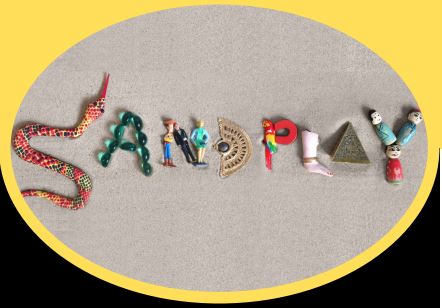Jungian sandplay therapy is a non-verbal therapeutic process originated by Dora Kalff based on the psychology of C. G. Jung. It is a direct method to experience the Self, which Jung encouraged as an essential step for healthy psychological development.
This is a comprehensive, two-year training program, taught by Jungian analysts and designed to promote the study and practice of sandplay therapy. It includes an introduction, history, and practical guidelines for sandplay therapy, as well as the application of Jungian theory, the study of archetypal and symbolic material found in dreams, mythology, and fairytales, and the movement of libido as it appears in sandplay scenes to express the individuation process. Seminars incorporate case material of children and adults to amplify and highlight theoretical underpinnings. Completion of the program meets all coursework requirements for Sandplay Therapists of America (STA) and International Society for Sandplay Therapy (ISST).
The training curriculum is organized into six areas of study that are designed to sequentially deepen the participant’s understanding and use of Jungian sandplay. Each unit contains three 6-hour seminars taught by Jungian analysts who are also certified sandplay therapist-teachers.
Seminars will be on Zoom only, once a month on a Saturday from 9:30 am to 4:00 pm with half-hour break for lunch.
Unit 4: The Psyche-Body Connection in Jungian Sandplay
Seminar 1: Saturday, September 30, 2023; 9:30 am – 4:00 pm | Presented by Denise Ramos, PhD, CST-T
Jungian Sandplay and the Body: Theory and Practice
Primitive regions of the brain record trauma and generate somatic symptoms that need to be addressed non-verbally. The challenge in treating severe trauma is to connect with these organic, unconscious levels of the psyche where words have no effect. In this seminar, we will see how Sandplay enhances psychosomatic integration by transducing the symptoms from the somatic to the conscious level of the psyche and moving traumatic states toward healthy ones.
Learning Objectives:
- Describe what is meant by a psychosomatic approach to psychotherapy from a Jungian perspective;
- Give an example of when it would be appropriate to introduce psychosomatics in clinical work;
- Describe how a psychosomatic approach can be utilized for patients dealing with trauma;
- Describe the modality of Sandplay therapy;
- Give an example of Sandplay therapy when working with a client with somatic symptoms;
- Describe what is meant by a psychosomatic hypothesis;
- Give an example of how to establish a psychosomatic hypothesis in a clinical setting.
Seminar 2: Saturday, November 4, 2023; 9:30 am – 4:00 pm | Presented by Ruth Ammann, CST-T
Sandplay as a Psychosomatic Therapeutic Method
During this seminar, we will study the Sandplay process of a young woman with hereditary progressive muscular dystrophy. Through this case, we will learn how the work with the concretely formed sand body can penetrate our unconscious body, and bring to light aspects that we cannot see otherwise. We will also describe how the transcendent function appears through psychosomatic transference and contact with the sand. Finally, we discuss how beneficial it is for the client and therapist to review the entire case material together. Only through these reviews can the effect of the process on both the client and the analyst be grasped in its full depth.
Learning Objectives:
- Describe the somatic therapeutic aspects of Sandplay;
- Describe what is meant by somatic transference;
- Give an example of the clinical use of Sandplay for a case of trauma with somatic symptoms;
- Describe the different aspects of the transcendent function;
- Illustrate the importance of the final review of the case material;
- Describe the different levels of clinical use of Sandplay.
Seminar 3: Saturday, December 2, 2023; 9:30 am – 4:00 pm | Presented by Marion Anderson, PhD, CST-T
Revealing Complexes and Somatic Symptoms in the Sand
This last seminar of Unit 4 will illuminate what Jung meant by the famous quote: “Often the hands know how to solve a riddle with which the intellect has wrestled in vain… by shaping it, one goes on dreaming the dream in greater detail in the waking state… even though it remains at first unconscious to the subject.” We will begin by examining several vignettes to illustrate how deeper layers of the psyche, such as the shadow, complexes, and archetypal motifs come to life by exploring the sand with the hands. Finally we will focus on a case description which illustrates the revelation of an unknown physical diagnosis through symbols and images in the sand.
Learning Objectives:
- Demonstrate the validity of Jung’s theory on the autonomy of hands;
- Describe how the exploration of sand by the hands can bring images to the psyche;
- Describe the therapeutic importance of working only with sand;
- Give a clinical example of the translation of somatic symptoms into words;
- Explain the relationship between dreams and sand images as seen in a clinical case;
- Describe the research about somatic symptoms in Sandplay.
Unit 5: Alchemical Processes, As Seen in Jungian Sandplay
Seminar 1: Saturday, January 27, 2024; 9:30 am – 4:00 pm | Presented by Gita Morena, PhD, LMFT, CST-T
The Great Work of Alchemy: A Journey of Transformation
This seminar introduces the concept of Alchemy, what it is, and how it relates to Jungian sandplay. The day includes an overview of how alchemical processes develop, an exploration of how the prima materia transforms, Jung’s insight into how alchemy relates to the individuation process and the collective unconscious, and the presence of alchemical imagery in sandplay case material.
Learning Objective:
- Describe the key concepts of alchemy;
- Describe the nature of alchemical operations;
- Identify the psychological aspects of alchemical processes;
- Describe the personal and therapeutic components of an alchemical process;
- Explain how alchemy relates to the individuation process;
- Describe the meaning of alchemical images in sandplay case material.
Unit 5 / Seminar 2: Saturday, February 24, 2024; 9:30 am – 4:00 pm | Presented by Dyane Sherwood, PhD, CST-T
Alchemical Symbolism and its Relevance to Sandplay
This class will explore how symbols emerge from experience, and can develop different meanings, depending on context. Like the alchemists who conducted experiments with matter, in sandplay we engage with matter: with sand and objects from which symbolic meanings emerge. These images sometimes express an attitude that is compensatory to consciously held beliefs. This was apparently true also for the alchemists. We will delve into the imagery of an illuminated alchemical manuscript, the Splendor Solis (1582), and describe how studying its symbolism can enrich our response to the sandplay trays created in our consulting rooms.
Learning Objectives:
- Explain the difference between a metaphor and a symbol;
- Explain why an entry in a symbol dictionary may not apply to its meaning in a particular context;
- Describe the alchemical sequence of colors that mark a series of transformations from a base to a valuable substance;
- Explain the symbolism of the alchemical sequence of colors;
- Explain how that alchemical sequence of colors applies to sandplay;
- Describe what is meant by “Redemption of the Feminine Principle” and how it applies to sandplay.
Unit 5 / Seminar 3: Saturday, March 16, 2024; 9:30 am – 4:00 pm | Presented by ShannonYockey, LCSW, CST-T
“Lead Makes the Diamond Suffer”: An Exploration of Alchemical Elements in Jungian Sandplay
According to Jung, alchemy is a symbolic representation of the individuation process. It illustrates how the psyche transforms and/or develops through the ego’s relationship with the contents of the unconscious. Alchemical images are valuable as they give us an objective basis for interpreting unconscious material. This seminar will provide an overview of the alchemical elements of lead, sulfur, salt, and mercury and illustrate their clinical implications with dreams, nature encounters, and sandplay case material.
Learning Objectives:
- Describe the positive and negative qualities of lead, sulfur, salt, and mercury alchemical elements;
- Describe the psychological aspects of the four alchemical elements;
- Explain the clinical application of these four alchemical elements and their potential to increase reflective consciousness.
- Explain how to identify the alchemical elements in sandplay scenes;
- Describe what is meant by alchemical active imagination experience;
- Describe how the alchemical elements relate to the individuation process.
Unit 6: The Emergence of the Self in Sandplay
Dates and Descriptions TBA



